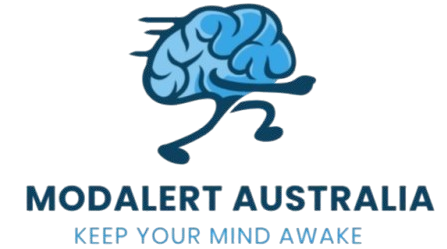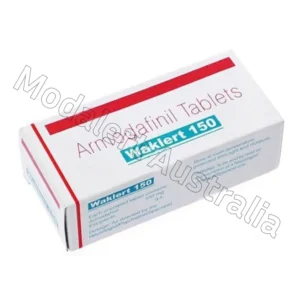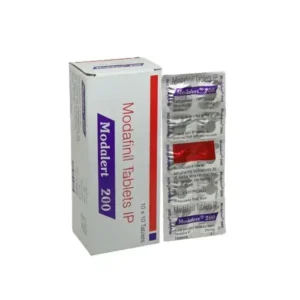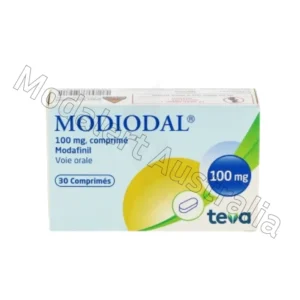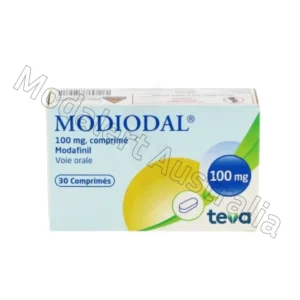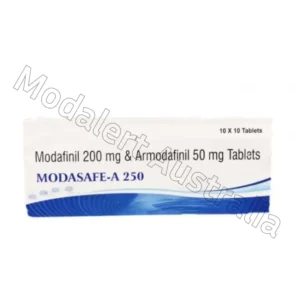Modafinil Dosage for Depression
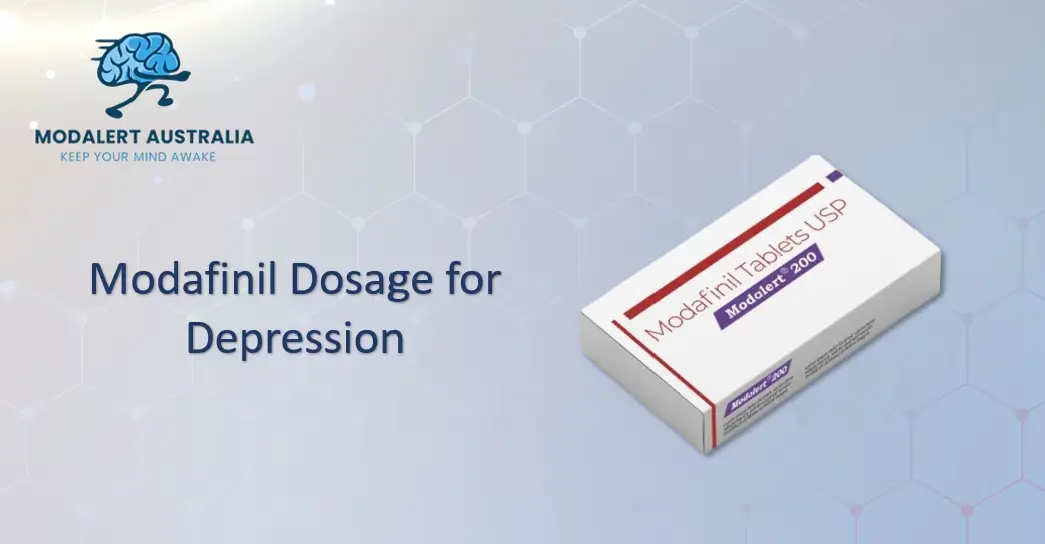
Depression continues to be one of the toughest mental illnesses that can be treated, particularly for those who are not able to react to the standard treatments for depression. Modafinil, a drug originally designed for sleep disorders, has emerged as an effective adjunctive therapy for depression, especially when it is associated with constant fatigue and cognitive impairment. This blog examines the research for the dosage, suggested doses, and processes, as well as the advantages and factors of utilising modafinil in the treatment of depression.
What is Modafinil?
Modafinil is a wakefulness-promoting agent primarily prescribed for conditions like narcolepsy, obstructive sleep apnea, and shift work sleep disorder. Modafinil’s distinctive pharmacological profile differentiates the drug from other stimulants by providing central nervous system stimulation, reduced risk of dependence, and lesser peripheral adverse effects.
How Does Modafinil Work in Depression?
The exact mechanism behind modafinil is not completely known; however, it is thought to affect various neurotransmitter systems:
- Dopamine: Modafinil enhances the extracellular level of dopamine by slowing down its reuptake. This leads to increased motivation and alertness.
- Norepinephrine: It alters the transmission of noradrenergic receptors, which can increase energy levels and concentration.
- Glutamate and GABA: Modafinil could enhance excitatory neurotransmission, reduce inhibitory signalling, and enhance cognitive function and mood.
- Histamine and Orexin: These systems are involved in arousal and wakefulness, possibly counteracting the effects of depressive lethargy.
Why Consider Modafinil for Depression?
Addressing Residual Symptoms
The majority of people who suffer from depression have residual symptoms such as fatigue, low concentration, and low motivation, even after an initial response to antidepressants. These signs are not just painful; they can also increase the chance of relapse as well as functional impairment.
Evidence for Efficacy
Numerous meta-analyses and clinical studies have proven that modafinil, when utilised as an addition to antidepressants, can:
- Reduce overall depression severity
- Remission rates are increased
- Increase sleep and reduce fatigue
- Increase cognitive ability and improve daily performance
Modafinil Dosage for Depression: What Does the Research Say?
Clinical Studies and Dosage Ranges
Retrospective Case Series (Menza et al., 2000):
- Dosage: 100–200 mg per day
- Findings: The majority of patients (with bipolar or major depression) were in full or partial remission after a period of about 2 to 3 weeks. It was especially responsive to fatigue, and the side effects were minor.
Placebo-Controlled Trial in Bipolar Depression (Frye et al., 2007):
- Dosage: 100–200 mg per day (mean dose 177 mg/day)
- Findings: Significant improvement in the symptoms of depression in comparison to placebo. Greater remission and response rates accompanied this. Results were apparent in week 2 and were maintained throughout week 6.
Meta-Analysis (Kaser et al., 2013):
Dosage Range: 100-200 mg/day (as an adjunctive therapy)
Findings: Modafinil greatly enhanced depression scores as well as Remission rates for both bipolar and unipolar depression, particularly in patients suffering from chronic fatigue.
Recommended Dosage Guidelines
Patient Type | Recommended Dosage | Frequency |
Adults with Depression | 100–200 mg | Once daily |
Patients with Co-existing Conditions | 50–100 mg | Once daily |
Older Adults | 50 mg | Once daily |
- Start Low, Go Slow: A majority of the guidelines recommend starting at 100 mg every day and the possibility of increasing by 200 mg, based on tolerability and response.
- Timing: Modafinil is best taken early in the day to prevent sleepiness.
- Maximum Dose: The doses of up to 400 mg have been prescribed for other ailments. There is no consistent research to suggest that there is any benefit beyond 200 mg for depression, and greater doses can cause a higher risk of side effects.
Who Might Benefit Most?
- Patients who have persistent fatigue, extreme tiredness or cognitive impairments despite the use of antidepressants in their treatment
- Patients who are nonresponsive or partially responsive to antidepressants of the first-line antidepressants
- Patients suffering from bipolar or unipolar depression, as confirmed through clinical trials and meta-analyses
Potential Benefits of Modafinil in Depression
- Improved Mood and Motivation: Through enhancing dopamine as well as norepinephrine activities, modafinil may improve mood and boost drive.
- Reduced Fatigue and Sleepiness: Particularly beneficial for people who suffer from depression that is characterised by drowsiness and lethargy during the day.
- Enhanced Cognitive Function: Improved concentration, memory and executive functioning were observed. This could aid in work as well as day-to-day life.
- Low Abuse Potential: As compared to other stimulants, modafinil is less likely to cause dependence and is classed as a Schedule IV drug.
Risks and Side Effects
Although generally tolerated, modafinil does not come without dangers. The most frequent side effects are:
- Dry mouth
- Headache
- Increased heart rate
- Insomnia
- Anxiety or jitteriness
- Nausea
Rare but serious risks:
- Severe skin reactions (e.g., Stevens-Johnson Syndrome)
- Psychotic symptoms, such as psychosis or mania, are more common when a person has bipolar disorder or a history of psychiatric illness.
Precautions:
- Older Adults: Start with smaller dosages (e.g. 50 mg) and closely monitor for adverse reactions.
- Patients with Co-existing Medical Conditions: A lower dose at the beginning (50-100 mg) might be suitable.
- Drug Interactions: Modafinil may alter the metabolism of other drugs, like oral contraceptives, as well as some antidepressants. Speak with your doctor prior to combining treatments.
How to Use Modafinil for Depression: Practical Steps
- Consult Your Doctor: Modafinil is not FDA-approved to treat depression and is best taken under supervision by a physician, usually as an addition to the existing therapy for antidepressants.
- Start with a Low Dose: Begin by taking 100 mg each early morning. If it is well-tolerated and further advantages are needed, go up to 200 mg over a period of days or a week.
- Monitor Response and Side Effects: Keep track of improvements in mood, performance, and energy and any negative consequences.
- Adjust as Needed: Dosage can be altered according to individual responses, tolerance, and other medical conditions that may co-exist.
- Regular Follow-Up: Regular assessment by a healthcare professional is crucial in order to guarantee safety and efficacy.
What Do the Experts Say?
“Modafinil appears to be a drug with promise as an augmenter of antidepressants, especially in patients with residual tiredness or fatigue. It is a particularly attractive alternative to other stimulants because of its low abuse potential and Schedule IV status.”
— M.A. Menza, Department of Psychiatry, University of Medicine and Dentistry of New Jersey
“Modafinil has actions on several neurotransmitter systems. This may explain why adding it to traditional antidepressants has beneficial effects on the symptoms experienced by depressed patients.”
— Professor Barbara Sahakian, University of Cambridge
Limitations and Areas for Further Research
- Not a Standalone Treatment: Modafinil is a good choice as an addition to it, and not as a replacement for traditional antidepressant therapy.
- Long-Term Safety: A majority of studies have looked at only short-term usage (up to six weeks). Further research is required to determine the long-term effectiveness and safety.
- Individual Variation: However, not all patients will benefit; even those who do not have cognition or fatigue symptoms might not see much improvement.
- Regulatory Status: The FDA does not approve Modafinil as a treatment for depression. Therefore, it is regarded as “off-label” and should be prescribed by a psychiatrist.
Summary Table: Modafinil Dosage for Depression
Aspect | Details |
Typical Starting Dose | 100 mg once daily (morning) |
Usual Therapeutic Range | 100–200 mg once daily |
Maximum Dose | 200 mg once daily (for depression; higher doses not shown to add benefit) |
Special Populations | 50–100 mg for older adults or those with co-existing conditions |
Duration of Use | Most studies: 2–6 weeks (longer-term data limited) |
Common Side Effects | Headache, insomnia, nausea, dry mouth, anxiety |
Serious Risks | Skin reactions, psychiatric symptoms (mania, psychosis) |
Monitoring | Regular follow-up for efficacy and side effects |
Conclusion
Modafinil is a viable solution for people suffering from depression who suffer from chronic mental impairment, fatigue or a partial reaction to antidepressants. The dosage recommended for the majority of adult patients is between 100 and 200 mg each day. It is best to take it at the beginning of each day. Modafinil is generally a well-tolerated drug, but must be taken with care and with medical supervision, especially in those who are at risk of adverse effects.
With the advancement of research, modafinil could become an increasingly acknowledged component of treatment for depression, specifically for patients suffering from fatigue and a slowing of cognitive function. Its use must be tailored, based on scientific evidence, as well as closely monitored in order to maximise benefits while minimising the risk.
